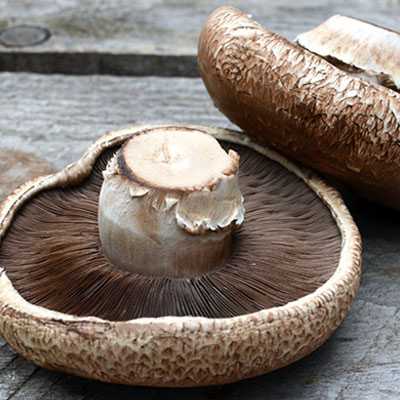Origins of Mushroom Ravioli
Mushroom ravioli, a revered dish in the Italian culinary tradition, combines the earthy depth of mushrooms with the delicate, tender embrace of homemade pasta. This dish's origins trace back to the Italian Renaissance, a time when the art of filled pasta began to flourish among the nobility and wealthy merchant classes. The mushroom ravioli recipe, as we know it today, is a testament to centuries of culinary evolution, marrying rustic, foraged flavors with the refined techniques of pasta making.
The mushroom ravioli filling is the heart of this dish, a blend where mushrooms are not merely an ingredient but the star. Traditionally, wild mushrooms are favored for their intense flavors and aromas, which can vary from the nutty nuances of porcini to the meaty texture of shiitake mushrooms. Paired with creamy ricotta and Parmesan, the filling becomes a rich, flavorful core, encased in the soft dough that cooks to perfection, offering a burst of umami with each bite.
When it comes to choosing a sauce for mushroom ravioli, simplicity is key to let the filling shine. A classic sauce for ravioli with mushrooms is a sage brown butter sauce, where the nuttiness of browned butter and the earthy hint of sage complement the mushrooms' richness. Alternatively, a simple tomato basil sauce can offer a light, acidic contrast to the dish's deep flavors, while a creamy Alfredo sauce can double down on the indulgence, enveloping each raviolo in a velvety coat. Regardless of the sauce chosen, the essence of a great mushroom ravioli recipe lies in the balance of flavors and the quality of ingredients, making it a beloved classic in Italian cuisine and beyond.
Mushroom Choice
Choosing the right mushrooms is crucial to creating a flavorful and aromatic mushroom ravioli. Different types of mushrooms can offer a range of flavors and textures, from earthy and meaty to light and delicate. Here are some excellent choices for your mushroom ravioli filling:
Cremini Mushrooms (Baby Bellas)
- Flavor Profile: Cremini mushrooms have a deeper, meatier flavor than white button mushrooms but are milder than their mature counterparts, the portobellos.
- Use: Their robust flavor and medium texture make them a versatile choice for ravioli filling.
Portobello Mushrooms
- Flavor Profile: Portobello mushrooms have a rich, meaty texture and flavor, making them a hearty choice for a filling.
- Use: Their large size and intense flavor work well when you want the mushrooms to be the star of the dish.
Shiitake Mushrooms
- Flavor Profile: Shiitake mushrooms offer a smoky, umami-rich flavor with a slightly chewy texture.
- Use: Excellent for adding depth and a complex flavor profile to your ravioli filling.
Porcini Mushrooms
- Flavor Profile: Porcini mushrooms are highly prized for their nutty, earthy flavor and aroma.
- Use: They are often used dried rather than fresh due to their availability and concentrated flavor, making them perfect for a rich and luxurious ravioli filling.
Chanterelle Mushrooms
- Flavor Profile: Chanterelles have a delicate, peppery flavor with a hint of fruitiness.
- Use: Their unique taste and slightly chewy texture can add an elegant touch to the filling.
Morel Mushrooms
- Flavor Profile: Morels are known for their nutty, earthy flavors and a honeycomb-like texture.
- Use: They are a gourmet choice that can elevate the filling, especially when paired with creamy and cheesy elements.
Oyster Mushrooms
- Flavor Profile: Oyster mushrooms have a subtle, anise-like flavor with a tender texture.
- Use: These mushrooms can add a mild, delicate flavor to the ravioli, making them suitable for lighter fillings.
Mixing Mushrooms
Use: Combining different types of mushrooms can create a more complex and layered flavor in your ravioli filling. Consider mixing meaty mushrooms like portobello with more aromatic varieties like shiitake or porcini for a filling with depth and character.
When selecting mushrooms for ravioli filling, consider their flavor profiles and how they'll complement the other ingredients in your dish. Freshness is also key—look for mushrooms that are firm, plump, and free from damp spots or damage. If using dried mushrooms, ensure they are properly rehydrated to get the best texture and flavor for your filling.
For more, check out our ‘Types of Edible Mushrooms’ article.
What To Serve with Mushroom Ravioli?
Mushroom ravioli is a delicious and hearty dish that pairs well with a variety of accompaniments. Here are our delicious recipes that you can serve with Mushroom Ravioli:
Wine & Dine
Pairing wine with mushroom ravioli involves balancing the earthy flavors of the mushrooms with the richness of the pasta and any sauce you choose. The ideal wine will complement these flavors without overwhelming them. Here are some wine suggestions that harmonize beautifully with mushroom ravioli:
1. Pinot Noir
Why It Works: Pinot Noir, with its light to medium body and fruity yet earthy profile, complements the umami of the mushrooms. Its subtle notes of cherry, raspberry, and forest floor echo the earthiness of the mushrooms, making it an excellent match.
Serving Tip: Serve slightly chilled to enhance its refreshing qualities alongside the dish.
2. Chardonnay
Why It Works: A lightly oaked Chardonnay can be a delightful pairing with mushroom ravioli, especially if the dish includes a creamy sauce. The buttery notes of the wine align with the richness of the pasta, while its crisp acidity cuts through the creaminess.
Serving Tip: Opt for a Chardonnay with moderate oak influence to avoid overpowering the mushrooms' delicate flavors.
3. Barbera
Why It Works: Barbera, an Italian red wine, offers high acidity and low tannins, which can cleanse the palate between bites of the savory ravioli. Its flavors of dark cherry, plum, and herbs complement the earthy tones of the mushroom filling.
Serving Tip: Look for a Barbera d'Alba or Barbera d'Asti for higher quality options.
4. Nebbiolo
Why It Works: Nebbiolo, known for its significant acidity and tannins, showcases floral and earthy notes that pair well with the complexity of mushroom ravioli. The wine's structure can stand up to the richness of the pasta, enhancing both the dish and the wine.
Serving Tip: Allow the Nebbiolo to breathe before serving to soften its tannins and fully release its aromas.
5. Sauvignon Blanc
Why It Works: For a white wine option, Sauvignon Blanc's high acidity and herbal notes can offer a refreshing counterpoint to the richness of the ravioli, especially if it's served with a lighter sauce or includes fresh herbs in the filling.
Serving Tip: Choose a Sauvignon Blanc with citrus and mineral notes for an invigorating pairing.















































